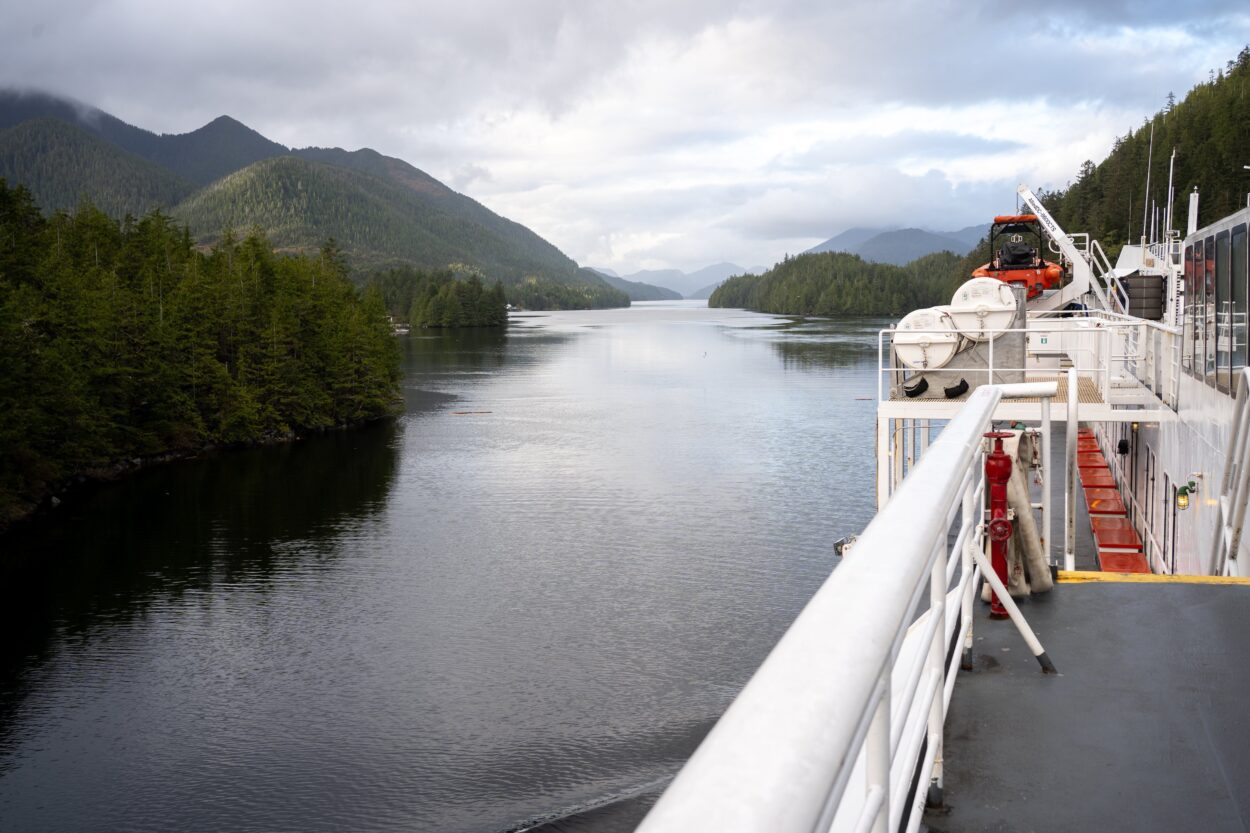
The Alaska Marine Highway System expects to roll out its long-range plan early next year, setting the course for the next 20 years. It was recently discussed at the annual Southeast Conference. The final details are still being figured out.
Listen to the story:
Alaska’s ferry system has been working on this extensive plan for the last two years.
“Our vision is for the 2045 long-range plan to chart a path forward to a thriving system,” said Craig Tornga, director of the Alaska Marine Highway System or AMHS. “It really defines our vision, sets our goals and develops our strategies for the future, and it also provides the framework for decision making and our resource allocation and then ensures that the future actions we take align with our vision.”
Tornga addressed the future of the state’s ferry system to hundreds who had gathered in Ketchikan last month for the Southeast Conference, which is a regional nonprofit that advocates for economic development.
AMHS convened a team to plan for the future – it included members of the conference, contractors, and the Alaska Marine Highway Operations Board, which advises the state on the ferry system.
The team held meetings with regional ferry groups across the state. And over the past year, they conducted a system-wide survey that received over 2,600 responses. It was compiled by the Anchorage-based McKinley Research Group led by Katie Berry. She said the number one concern was being able to rely on sailings.
“Reliability, Reliability, Reliability is what the communities and residents most impacted by the marine highway system want,” said Berry.
Like any other boat, it’s normal for things to break down on ferries especially when the state’s fleet is aging. Of the nine AMHS ferries, one is 60 years old, two are 50 years old and one is 47. The Tustumena is 60 years old, the Columbia and Leconte are both 50, and the Aurora is 47. There also aren’t enough replacement ferries in Alaska’s fleet for when things go wrong – meaning vessels get docked and sailings get canceled.
As for what ferries are used for, most of the McKinley survey’s respondents said that they use the ferry service to connect to the Lower 48, to the road system, for medical care, and for shopping. Other forms of transportation are most limited due to the cost and weather. Survey results have been broken down by community and are available online at DOT’s website.
The planning team came up with eight possible long-range service scenarios and paired them down to four. Now, Berry said, they’re figuring out which will be the best one.
“I want to be really clear that a plan like this is not something that you publish, and next year, Craig can snap his fingers and say, ‘Great, here’s your increase in service for all of these communities,’” Berry said. “It really will take this dedicated work in each of these focus areas to move on a 20-year path.”
One certainty in the long-term plan is replacing the 60-year-old Tustumena that serves the Kodiak and Homer areas and the Aleutians. The Tustumena Replacement Vessel, or TRV as it’s called, will have a backup battery system, making it the first hybrid vessel in the fleet. Siemens Energy is the engineering group working on those elements. Engineer Ed Schwarz said hybrid and battery-powered vessels are the future.
“When I first started, seven-eight years ago, working in this kind of systems hybrid business, you would have to go to Scandinavia to actually see one of these vessels running,” he said. “You’d have to go to Norway, you have to go to Germany, or Denmark or something like that to actually get on one of these vessels.”
Now, he said, hybrid ferries are in New York, Texas, and Washington. He said the newer systems require new safety measures – especially because the service life of ferries ends up being a lot longer than planned.
“When you’re integrating new technology, you’re changing the safety requirements on board the vessel,” Schwarz said. “So, training of people is really important, making sure that we’re conforming with the Coast Guard requirements for this new technology.”
The new hybrid Tustumena won’t be ready for sailing until 2027 or 28. And the estimated $315 million price tag is almost entirely covered by federal dollars.
Meanwhile, AMHS plans to have its final long-range plan report done by the end of the year and release the plan to the public at the start of next year.
The public still has time to give input – the Alaska Marine Highway Operations Board will take comments at its meeting on Oct. 23.
Tornga said they’ll revisit the plan annually in the years to come to keep it relevant.





